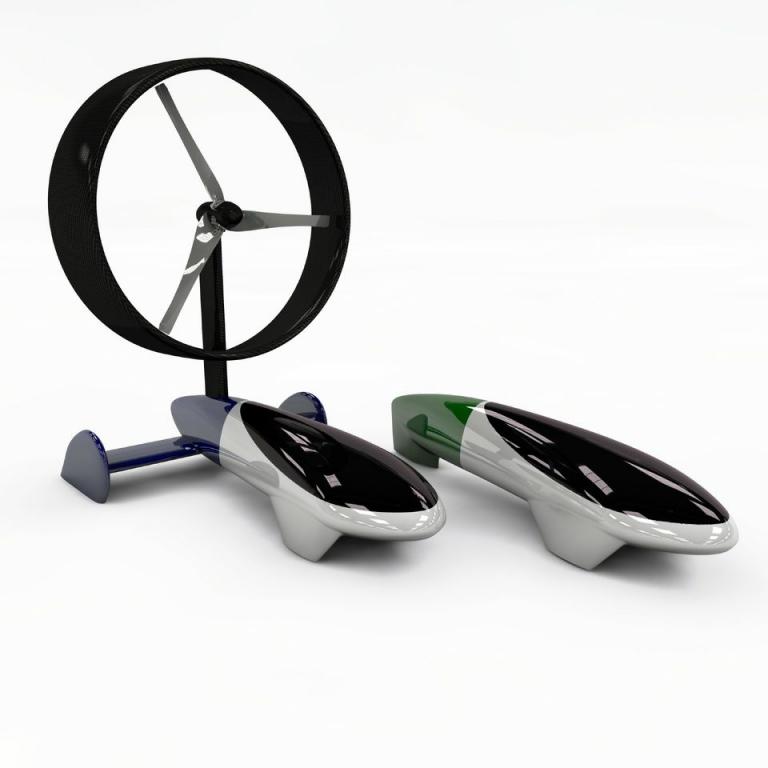By simply changing the rear part, students of Hogeschool InHolland change their super efficient ethanol car into a wind-driven one.
Artist's impression of Anemo and Apollo cars - Image: Rootbox
Spring in the Netherlands means it’s time to go out. In solar boats, hydrogen karts, electric racers or bicycles approaching the sound barrier. Only this time, students from Hogeschool InHolland, TU and Haagse Hogschool decided to combine the high-mileage vehicle Apollo with the wind-powered vehicle Anemo. Both need a slick, light aerodynamic capsule for the driver, only the back part is different.
The super-efficient ethanol-powered Apollo will be on the road within two weeks. The Shell Ecomarathon, in which it will compete, will be held in Rotterdam between 15 to 19 May. During the Hogeschool Rootbox, a practical workshop comparable to the TU’s Dreamhall, the combi-vehicle was built.
The back part for the wind-powered vehicle Anemo will have to be studier and heavier than Apollo. It will have to be able to withstand the considerable wind forces on the breezy dike near Den Helder. The Racing Aeolus competition* challenges university teams to design cars that use the force of the wind to propel themselves against the wind. So far, the Danes (Danish University of Technology) have achieved the best result with 75 percent of the windspeed upwind.
Team Anemo achieved 50 percent last year. This year they’ve tuned their rotor blades to correct for the additional wind caused by the vehicle upwind speed. TU master’s student Mark Schelbergen (Aerospace Engineering) has calculated the optimal blade and ring duct profiles for them.
TU researcher Ben Geurts MSc. was involved in the early stages of the TU wind racing team called Team Vortex. He thinks the Rootbox team has made a smart move. “Combining the two vehicles makes better use of knowledge, production facilities, workshops, financial means and sponsorships”, says Geurts. He doesn’t think there is much sacrifice or compromise in the design. “You’ll add a little extra weight for the coupling, but that’s negligible.”
Geurts has left the Vortex team after it had decided it would not make use of a vertical axis turbine, Geurt’s expertise and PhD research project. Currently the team’s main activity is issuing calls for students to participate. For an activity that will take place in August, such calls seem a bit late.
To help you keep track of the activities, the challenges are called Shell Ecomarathon (Rotterdam, 15 to 19 Mai) and Racing Aeolus (Den Helder, 22 to 25 August 2013). Here, there’s more information on the Rootbox teams Apollo and Anemo and on the TU teams Ecorunner and Vortex.
Heb je een vraag of opmerking over dit artikel?
j.w.wassink@tudelft.nl


Comments are closed.